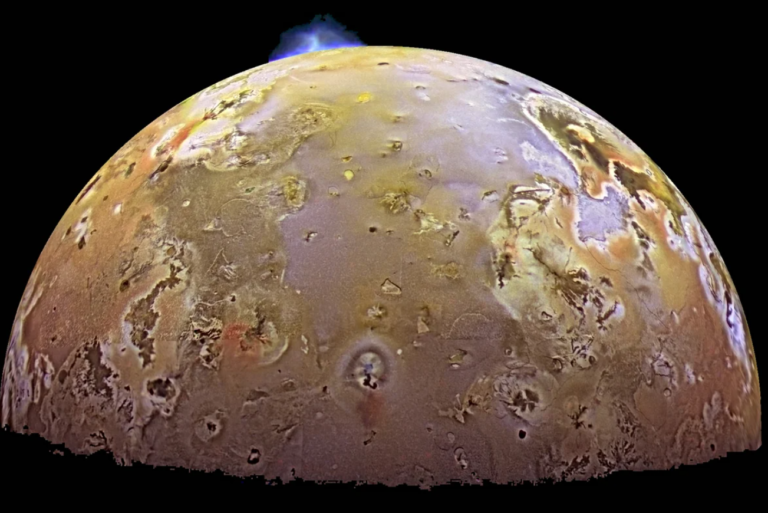Unveiling the Enigmas of Io: New Map Exposes Secrets of the Solar System’s Most Volcanically Active Moon
The most advanced map of active volcanoes on Jupiter’s moon Io suggests the presence of a concealed magma ocean and beyond.
Scientists affirm two fundamental facts about Io with certainty. Firstly, this innermost moon of Jupiter stands as the most volcanically active object in the known universe. Its surface resembles an oven-baked cheese pizza, adorned with countless lava-spewing calderas, glowing rivers of molten rock stretching sinuously across the horizon, and endless eruptions launching towering arcs of matter into the vacuum of space.
Secondly, the depth of Io’s fiery plumbing remains a mystery. The question of whether Io’s volcanoes draw from reservoirs just beneath its crust or from a heat source welling up from deeper within near the moon’s core holds significance. Solving this mystery could provide insights into how Io’s lunar sibling Europa and other icy moons manage to maintain vast, potentially habitable liquid-water oceans despite the chilly conditions of the outer solar system. The authors of a recently published study in Nature Astronomy believe they have an answer, placing their bets on heat engines buried almost “skin-deep” below Io’s surreal surface.
According to Anna Gülcher, a planetary scientist at the California Institute of Technology, who was not part of the study, “Research like this provides invaluable insights into the diversity of volcanic activity and the interior heating of other worlds.” Although the paper’s conclusions are not definitive, they contribute to refining models of where and how heat arises within frozen alien moons.
Io’s internal heat is linked to the presence of its nearest neighboring moons, Europa and Ganymede. These moons sculpt Io’s orbit around Jupiter into a noncircular oval, causing it to approach and recede from the gas giant, generating tides that squeeze Io’s geological interior, producing significant frictional heat. The focus is on determining where within Io this heating is concentrated and, by extension, where tidal heating for Europa and other oceanic moons might occur.
Observations of Io’s erupting volcanoes, particularly those around its poles, offer crucial clues. NASA’s Juno spacecraft, in a polar orbit of Jupiter since 2016, provided unprecedented views of Io’s caps, enabling scientists to create a global map of volcanic hotspots. Infrared Juno images revealed a concentration of volcanic heat in Io’s lower latitudes and equatorial regions, suggesting that tidal heating is focused higher up, closer to the crust.
The study’s authors surveyed 266 volcanic hotspots across Io, showing that its lower latitudes emitted 60 percent more volcanic heat per unit area than the poles. This supports the idea that tidal heating primarily occurs at shallow depths, either within an upper mantle with a putty-like consistency or within a partly or fully molten ocean of rock just below the crust.
Ashley Davies, a volcanologist and planetary scientist at NASA’s Jet Propulsion Laboratory, notes the complexity of Io, stating, “Io’s going to be a lot more complicated than these end-member models.” While the evidence leans toward a shallower heat source, the exact mechanisms are not entirely clear-cut.
The study reveals that Io’s poles are also volcanically active, indicating some degree of tidal heating at depth. However, the north pole emits more than twice the volcanic heat per unit area compared to Io’s southernmost reaches, an anomaly that remains unexplained. Uncertainties persist, and researchers acknowledge the dynamic nature of Io’s volcanic activity, emphasizing that future snapshots may offer different perspectives.
Despite these challenges, Juno’s upcoming flyby in December provides an opportunity to further investigate Io’s elusive volcanic phenomena. The ever-changing nature of Io’s fiery landscape ensures that mapping its volcanism remains an ongoing and thrilling scientific pursuit.
Do not forget to share your opinion with us to provide you with the best posts !




0 Comments